Header logo
header top contact widget
Systemic Inflammation
A Periodontist Can Contour Gum Tissues For A More Beautiful Smile
Posted on Nov 23, 2023 by William J. Claiborne, DDS MS
During the holidays, my wife and I attend gatherings where we occasionally meet new people. A common question, as applies to most of us, is “What do you do?” When I reply that I’m a periodontist, it is often met with a look of not knowing what a periodontist is but not wanting to appear as if that’s the case.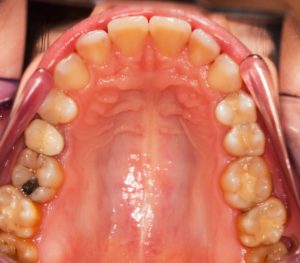
I’d like to explain what “we” are and, from a smile enhancement basis, what we can provide. I typically find that when I say “periodontal plastic surgery” it comes across as far more familiar than “performing gingivectomies.”
A periodontist is a dental specialist who has an advanced level of understanding when it comes to diseases of the oral tissues, reshaping of gum tissues and in the selection and placement of dental implants.
The American Academy of Periodontology defines a Periodontist as:
“A periodontist is a dentist who specializes in the prevention, diagnosis, and treatment of periodontal disease, and in the placement of dental implants. Periodontists are also experts in the treatment of oral inflammation. Periodontists receive extensive training in these areas, including three additional years of education beyond dental school. They are familiar with the latest techniques for diagnosing and treating periodontal disease, and are also trained in performing cosmetic periodontal procedures.”
https://www.perio.org/consumer/what-is-a-periodontist
To reach this specialty begins with educational requirements that are extensive. First, there is completion of 4 years of college (for an undergraduate degree) followed by another 4 years in dental school (for a doctorate). To specialize in Periodontics, he or she must further their education for another 3-4 years before completing the stringent requirements for specialty certification in periodontics.
The gums are rather under-rated when it comes to the tremendous role they play in both oral health and even your overall health.
Think of the gum tissues as a protective blanket in the mouth. The gums cover over the structures that support teeth and house the tissues and bone that are vital to our health. For instance, look at the base of each tooth. You’ll see that gum tissues snugly wrap around the base of each tooth. This protective seal is what prevents bacterial penetration beneath the gum line.
When oral bacteria amass to an extent that cannot be controlled by oral hygiene measures at home, they cause inflammation in the gums. In turn, the gums loosen their tight grip around teeth, which allows entry of the now-potent bacteria. These infectious bacteria have been linked to a number of problems related to a long list of serious health problems.
Oral bacteria has been found to trigger or worsen systemic conditions, including atherosclerotic vascular (heart) disease, pulmonary (respiratory) disease, diabetes, pregnancy-related complications (including preterm births), osteoporosis (bone loss), and kidney disease. A shared trait between gum disease and these medical conditions is that they are chronic conditions that take a long time to develop.
https://www.agd.org/docs/default-source/self-instruction-(gendent)/gendent_nd17_aafp_kane.pdf
It is important to be familiar with the signs and symptoms of periodontal (gum) disease, which include:
• Red, swollen or tender gums
• Bleeding while brushing, flossing, or when eating certain foods
• Gums that pull away from the teeth (recede) or make the teeth appear longer than normal
• Loose or separating teeth
• Pus pockets that form between gums and teeth
• Sores in your mouth
• Persistent bad breath
• A change in the way teeth fit together when biting
• A change in the fit of partial dentures
If you have any of these, you are urged to seek a thorough periodontal evaluation as soon as possible. This disease will only worsen without treatment. Gum disease is the nation’s leading cause of adult tooth loss.
Healthy gum tissues do more than serve in a protective role. The appearance of a smile can be greatly affected by the shape and amount of gum tissues exposed when smiling.
When a smile shows too much or too little gum tissue bordering the tops of teeth, it moves the “smile line” out of balance. For example, in a beautiful smile, the arches of gum tissues visible in a full smile flow at a similar height. These gum arches are in a complimentary line to teeth, rather than at varying levels over teeth. When the gum lime is not evenly balanced, it causes a smile to have a jumbled look.
Crown lengthening is performed to reposition the gum tissues to enhance the appearance of a smile. In addition to creating a more appealing look, crown lengthening is also performed to restore the tight seal of protection around teeth. While you enjoy the beauty of your new smile, crown lengthening gives your oral health a boost at the same time.
When the height of gum tissues that show above all teeth in a smile is too high, it is referred to as a “gummy smile.” A gummy smile is not detrimental to your oral health. However, having one does affect the appearance of a smile based on balance. For some people, it makes them “hold back” on a full smile.
This can be corrected with a gingivectomy. To begin, we numb the gum tissues and carefully trim the excess. As a Periodontist, I take specific measures to ensure a natural looking arch remains over the teeth while preserving the natural points that ‘dip’ between each tooth.
 A gingivectomy is performed in our Asheville periodontal office with a dental laser. This provides patients with a number of advantages: (1) enhanced comfort; (2) precision lines; (3) minimal or no bleeding; and, (4) faster healing time.
A gingivectomy is performed in our Asheville periodontal office with a dental laser. This provides patients with a number of advantages: (1) enhanced comfort; (2) precision lines; (3) minimal or no bleeding; and, (4) faster healing time.
In our Asheville NC periodontal office, we use the highly-advanced LANAP with PerioLase MVP 7 Laser-Assisted Attachment Procedure. This is an advanced protocol that efficiently and effectively treats advanced gum disease (periodontitis) with the added advantages of a dental laser. It is a non-surgical alternative for patients with moderate to severe periodontal disease, causes very little discomfort and has a quick recovery time. It has also been found to stimulate bone regrowth in damaged areas.
In some cases, the crown lengthening procedure can save a tooth from removal. Typically, when a tooth fractures or breaks at the gum line, it must be removed since there is not enough tooth structure to support a crown. However, a crown lengthening procedure may be able to expose more of the tooth’s structure, essentially saving the natural tooth.
For those who have avoided gum treatment due to dental fear, we offer several sedation options, including oral and IV sedation. Oral sedation is a pill that helps patients relax. It also has an amnesiac effect, leaving most with little or no memory of treatment afterward.
I.V. sedation (also known as “twilight sleep”) places the patient in a deeper sleep state and erases memory of the procedure. Here, anesthesia is overseen by a medical doctor (MD) who is a board certified Anesthesiologist. With both sedation options, patients are closely monitored with advanced safety equipment throughout treatment.
We help patients understand that their fears and concerns are not unusual. The doctors and staff of our Asheville periodontal dental office respect each patient and provide gentle, compassionate care – at every appointment.
We believe you’ll find no better periodontal dental environment in western NC. Whatever your need for the treatment of gum disease, recontouring of gum tissues, or in the placement of dental implants, call 828-274-9440 to learn more or to schedule a consultation appointment. New patients are always welcome and a referral is not required.
Know How Oral Bacteria Form & Cause Damage
Posted on Nov 07, 2023 by William J. Claiborne, DDS MS
Often, once people understand how something breaks down, they are able to watch for telltale signs or take preventive measures. For example, when the grooves in a vehicle’s tires become more shallow, it’s obvious they need to make arrangements for new tires.
This is true, also, for your oral health. Knowing concerning oral signs and symptoms can help you prevent cavities, periodontal (gum) disease and tooth loss.
Oral bacteria exists in every mouth; some of it is “good” bacteria. The good bacteria are even helpful to the digestive system. However, harmful bacteria can run rampant if not kept under control.
The average mouth houses around 20 billion (that’s billion with a “b”), consisting of about 700 different types. Bacteria breed very quickly. The numbers can grow amazingly fast and their buildup produces a bacterial film that coats the teeth and gums. This is known as plaque.
Plaque is the sticky coating in your mouth, most obvious when you first wake up. When plaque is not removed regularly (through thorough brushing), the bacteria attack tooth enamel. Results include bad breath, yellowed teeth, cavities and tender gums.
Plaque formation actually begins as you chew carbohydrates, which seems to be prevalent in most of the foods we eat in today’s diet. As carbohydrates blend with saliva and existing bacteria in the mouth, an acid is created.
Plaque that is allowed to remain on teeth for about 48 hours hardens. This is known as tartar, which is a mass of bacteria that forms between and at the base of teeth.
Once in this hardened form, removal can only occur with special tools used by your dentist or dental hygienist. This is what your hygienist is scraping off during cleanings. Without tartar being removed, it causes the gums to swell, feel tender and may bleed when brushing. This is typically the initial stage of gum disease, known as gingivitis.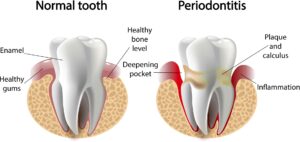
However, for people who brush twice a day and still have tartar formation between dental hygiene appointments, there are factors that may be contributing. Some of these are not common knowledge, which is important to know in your prevention goals. These include:
Having “dry mouth”: There are a number of reasons that some people suffer with a drier mouth than others. Unfortunately, those who have insufficient saliva flow (which continually helps to cleanse the mouth) are more susceptible to tooth decay from plaque and tartar.
Saliva protects teeth and gums by helping to manage the growth of harmful bacteria while maintaining a neutral pH in the mouth. This slows microbial growth and keeps bacteria from sticking to teeth.
Other contributors to dry mouth include aging, caffeine (including coffee, tea, sodas, and chocolate), smoking, and a wide range of medications (such as antidepressants, decongestants and diuretics).
Poor oral hygiene: Since the pandemic, normal routines have been uprooted for many people as they have adjusted their “ready for the day” tasks to more casual timetables. Unfortunately, this seems to have left the habitual brushing and flossing times to days where oral hygiene has dropped out of the twice-a-day routine.
A March 2023 poll (conducted on behalf of CeraVe) included 2,000 men between the ages of 18 – 42. They found that only 54% brush their teeth daily (with one-third admitting to only once a day when they do brush). To no surprise, a recent report by the Centers for Disease Control & Prevention reveals that nearly 26% of ages 20 – 44 have untreated dental caries.
Frequent snacking: Every time you eat or drink, an acid attack begins in the mouth. This acid flows in with saliva to begin the initial stage of digestion. However, this acid is very potent, enough to even soften tooth enamel. So, every time you take a bite of a cookie, acid flows into the mouth and remains there for about 20-30 minutes. When the mouth endures frequent acid attacks from snacking between meals, the damage to precious tooth enamel will catch up to you in the form of cavities.
In addition to the harm that oral bacteria can cause teeth, the gum tissues – essentially the protective coating to the vital structures that support teeth – endure the rigors of bacterial overload. Eventually, this catches up to most people in the form of:
• Gingivitis – As the initial stage of gum disease, inflammation is triggered by plaque buildup at the gum line. When daily brushing and flossing fail to thoroughly remove plaque, toxins form that cause irritation to the gum tissues. Once symptoms emerge, they may include seeing blood in the sink when brushing or having sore, swollen gums.
• Periodontitis – As the disease advances, the bone structures and fibers that support teeth are damaged by the destruction of infectious oral bacteria. At this stage, pockets form below the gum line, filling with bacteria-laden plaque.
• Advanced Periodontitis – In the advanced stage of gum disease, fibers and bone supporting natural teeth are destroyed. This can cause teeth to shift or loosen, requiring aggressive treatment to prevent tooth loss. Eventually, some teeth may require removal.
Proactive measures NOW can help you avoid costly repairs to teeth, tooth replacement or the treatment process to rid periodontal disease. Start now with:
– Brush twice daily, floss every day and maintain regular dental check-ups. Thorough at-home oral care and regular dental check-ups can help you avoid problems from occurring in the first place.
– Delay brushing after eating or drinking. Wait 20-30 minutes to allow the acid attack in your mouth to subside. Remember, this acid can soften tooth enamel. The abrasiveness of a tooth brush or tooth paste can wear away precious tooth enamel.
– Swish with water. Enjoy a cup of coffee or glass of wine but try to alter these with a glass of water, allowing it to wash over teeth before swallowing. Or, swish with water.
– Eat sweets only with meals. Rather than forgo a sweet indulgence as a snack, enjoy your favorites as dessert following your meal since your mouth is already enduring an acid attack. This merely prolongs an acid attack rather than trigger a new one.
A healthy mouth is important for your overall health, as research has shown. We now know that the inflammatory bacteria of periodontal (gum) disease are able to enter the bloodstream through tears in weakened gum tissues. Numerous studies have found this bacteria can trigger harmful reactions.
For example, the bacteria can cause inflammation that sets into motion risks factors connected to arthritis and diabetes. Some cancers have also been correlated to this bacteria. Heart disease, stroke and high blood pressure have been as well. Alzheimer’s is also being studied along these lines.
While there is no clear pathway to verify gum disease bacteria are the “cause” of these serious conditions, research has continually shown they are linked, which can greatly increase one’s potential for having these problems develop (or worsen).
If you haven’t been fully committed to your oral health, there is no better time to begin than the present. Start with a thorough periodontal examination by calling 828-274-9440.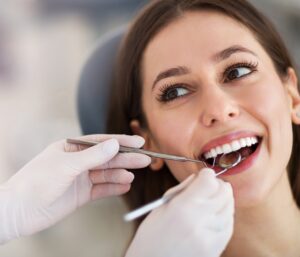
If dental fears have caused you to delay or avoid regular dental care, consider beginning with a consultation. This occurs in a comfortable, private room that is removed from the clinical side of the office. Too, many treatments can include oral or IV sedation (sleep dentistry, or “twilight sleep”).
And, if budget constraints are an obstacle, we offer several payment plans. Most are interest-free with no down payment required (for qualified individuals). Feel free to ask about these during your consultation.
Sources:
www.todaysrdh.com/
perio.org
Oral Health & Tooth Loss Within America’s Aging Population
Posted on Sep 18, 2023 by William J. Claiborne, DDS MS
There are currently 54.1 million U.S. adults ages 65 and over; a number that is expected to grow to 95 million by 2060.
In 1900, the percentage of American adults over the age of 65 was just 4.1%. Today, that number has grown to nearly 16%. By 2040, the elderly adult population is estimated to be more than double the senior population of the year 2000.
https://www.aplaceformom.com/caregiver-resources/articles/elderly-nursing-home-population
Many baby boomers (Americans born between 1946 – 1964) will keep their teeth longer than any generation before, yet they continue to experience a preventable decline in oral health.
Common risk factors such as smoking, poor diet, a reduced capacity to care for one’s teeth and obtain professional dental care, and biological mechanisms – such as low salivary flow caused by medications – may contribute to tooth decay and tooth loss.
Periodontitis (advanced gum disease) is a prevalent oral disease in older adults. It is typically marked by inflammation of the gums and supporting structures of the teeth, resulting in sore and bleeding gums as well as painful chewing problems. Loss of the supporting structures of the teeth (including supportive bone) results from an imbalance of bacteria that exist in the space between the teeth and the gums. This leads to an inflammatory response that develops into periodontal disease.
As teeth lose support from their diseased foundation, mobility and tooth drifting can occur in addition to abscesses, which can ultimately result in tooth loss. As the disease intensifies, bone loss around affected teeth can advance with a worsening infection that can lead to serious health problems far beyond the mouth.
Periodontal disease is associated with chronic diseases such as cardiovascular disease, diabetes, respiratory disease, and dementia. Along with other challenges to maintaining good health, the prevalence of any periodontitis among older adults is high. Three in five older adults are affected, with prevalence higher in men and persons with low incomes. Four in five older adults who smoke cigarettes have some form of periodontitis.
The loss of all natural teeth, known as edentulism, reduces quality of life because it interferes with the ability to eat, speak, and feel comfortable among other people. Tooth loss also affects a person’s ability to consume nutritious food and can impact social involvement with others while consuming food.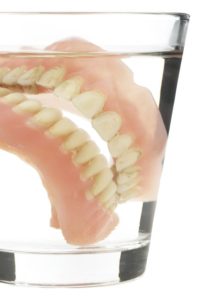
Overall, 17% of adults 65 and older are edentulous. Fortunately, edentulism has declined over the years among older adults aged 65 to 74, from about 50% in the 1960s to 13% today.
https://www.cdc.gov/oralhealth/pdfs_and_other_files/Oral-Health-Surveillance-Report-2019-h.pdf
Prevalence of total tooth loss among adults ages 65 and over is higher in both North and South Carolina than many other states, which is in the 16.6 – 26.3 percentage range. This compares to states like Illinois, Wisconsin and Utah, which are some states in the 6.2 – 11.3 percent range.
https://www.ncbi.nlm.nih.gov/books/NBK578296/figure/ch6.fig6/?report=objectonly
Having fewer than nine teeth is considered severe tooth loss and can cause major difficulties in eating a healthy diet of fresh and nutritious fruits, protein-rich meats and sufficient fiber. Without chewing comfort, strength and stability, food choices can result in either weight loss or obesity. Extensive tooth loss also detracts from physical appearance and impedes speech, another challenge to social contact and job prospects. This can also inhibit intimacy, lower self-esteem, and impact overall quality of life.
https://www.nidcr.nih.gov/sites/default/files/2017-10/hck1ocv.%40www.surgeon.fullrpt.pdf
Another challenge for older adults is orofacial pain. Orofacial pain in older adults can originate inside the mouth from tooth-related or gum infections. It may also originate outside the mouth, such as pain in the jaw joint area, or face and cheeks. Orofacial pain often results from ill-fitting dentures or a microbial infection causing an inflammatory reaction known as denture stomatitis (an oral yeast or fungus condition)
Older adults also struggle with “dry mouth.” Dry mouth is surprisingly common – an estimated 35 million U.S. adults may have this condition, known as xerostomia. Common causes include medications, autoimmune disease, systemic diseases, and as a result of head and neck irradiation.
Drugs are by far the most common risk factors for chronic dry mouth. Nearly 9 in 10 (89%) adults aged 65 and older take prescription medicine. More than half (54%) report taking four or more prescription drugs. The drugs most consistently implicated in “dry mouth” are antidepressants, diuretics, beta blockers, bronchodilators, and antihistamines.
High-risk behaviors are generally less common among older adults than in younger age groups. About 9% of those 65 years and older reported that they were current smokers, and 8% reported excessive alcohol consumption (having five or more drinks in one day at least once in the past year). Cannabis use also is on the rise among seniors although it remains less than 5%.
The problems associated with poor oral health and tooth loss extend greatly to other areas of the body. Oral bacteria and their toxins can spread into the bloodstream through ulcerated or inflamed tissues during chewing, routine oral hygiene, and dental procedures. In weakened gum tissues, even the act of tooth brushing can open up entry points for bacteria plaque and gingival inflammation in the bloodstream.
In addition, the presence of oral bacteria or their toxins may induce inflammatory responses, which can prompt insulin resistance. Oral bacteria can reach tissues in the lung, heart, gut, placenta, joints, and even the brain. They have been associated with infective endocarditis, and chronic inflammation may contribute to systemic conditions such as cardiovascular disease and diabetes.
Obviously, there are many causes for oral health challenges, all having a detrimental effect on quality of life to some extent. We want to help the residents of Western North Carolina enjoy their retirement years with a healthy, confident smile and oral health that supports good overall health.
First, know the signs and symptoms of periodontal (gum) disease, which include:
• Swollen or puffy gums
• Gums that turn red, dark red or dark purple gums
• Gums that are tender or bleed easily
• Seeing blood when brushing or flossing
• Persistent bad breath
• Pus pockets that form between teeth and gums
When periodontal disease exists, it is important to know that this will not go away without treatment. Once this infection is underway, it will only worsen, leading to more painful symptoms and even eventual tooth loss.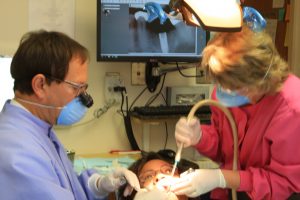
If you have signs of gum disease, see a periodontal specialist as soon as possible. In addition to lowering the risk of tooth loss, a periodontist can help you lower the risks of gum disease’s infectious bacteria in the bloodstream, which research has linked to serious (and even deadly) health problems.
Call our Asheville periodontal dental office to schedule a consultation. If fear or anxiety has prevented you from regular dental visits, we can discuss several options (including oral or IV sedation) to provide comfortable, relaxed appointments. Call 828-274-9440.
Don’t Allow Dental Fear or Anxiety To Ruin Your Smile
Posted on Aug 23, 2023 by William J. Claiborne, DDS MS
It’s a proven fact that your oral health – the wellness of your teeth and gum tissues – is an influencing contributor to your overall health. For decades, researchers have studied the concerning risks, and alarming connections, between oral health and a number of serious diseases in the body.
The leading culprit in this scenario are the bacteria of advanced gum disease, known as periodontitis. Gum disease breeds bacteria that are inflammatory in makeup. Once they enter the bloodstream (through tears in disease oral tissues), studies have found these potent bacteria can trigger the onset of serious diseases, such as:
• Heart disease
• Stroke
• Alzheimer’s disease & Dementia
• Some cancers (including lung and pancreatic)
• Pre-term babies
• Diabetes
• Arthritis
• High blood pressure
• Erectile Dysfunction (ED)
As research continues, more and more findings are bringing to light just how connected the mouth is to the efficient operation of the immune system. During the Covid pandemic, it was well publicized that those most vulnerable to the virus were those who were immune compromised.
One study, conducted between February and July 2020, analyzed two groups of 568 total patients with severe COVID-19 complications (death, ICU admissions or assisted ventilation). Periodontal conditions in the two groups were analyzed. Of the patients studied, those with periodontitis were three times more likely to experience COVID‐19 complications including death, ICU admission, and the need for assisted ventilation.
For years, the cost of dentistry has been credited for preventing millions of American adults from having regular dental care. This was recently studied in a nationally representative survey of 5,682 adults. In this, researchers looked at knowledge, attitudes, experiences, and behaviors related to oral health.
Results from the survey show that lack of insurance is a leading reason for avoiding dental care or delaying recommended care (often until something becomes so painful that the individual is forced into a dentist’s chair seeking relief).
The study showed that 16% of adults without dental insurance admitted that they had not seen a dentist in more than five years compared to just 5% of adults with dental insurance. Forty percent of adults without dental insurance reported cost was the reason they hadn’t visited the dentist in the past two years, compared to 14% of adults with dental insurance.
Yet, excruciating pain from a dental problem can be the impetus for setting aside the cost. The same is true for people who have fear or anxiety associated with dental care.
About 36% of people in the U.S. have a fear of dental treatment, with 12% having an intense fear, known as dentophobia. Dental phobics are people who avoid going to the dentist at all. Dental fear is more common in females than males, with an estimated 3% of men and almost 5% of women having dentophobia.
Reasons for these fears include:
– Fear the anesthetic will not work or be sufficient to fully numb the pain
– Blood makes some people feel afraid or panicky about bleeding during a dental procedure.
– People may fear choking or gagging and not being able to breathe or swallow.
– For individuals who have had a poor experience with a dentist in the past, they may associate negative feelings with their dentist.
– Feeling pain from the procedure or recovery
– Some people are highly fearful of needles.
– The noise from drills and dental instruments used by a dentist or dental hygienist can create high levels of anxiety for some people.
– The same is true when it comes to certain smells that arise during dental treatment.
New Study Links Periodontitis and COVID‐19 Complications
At our Asheville NC periodontal dental office, we take patient comfort very seriously, and that goes for all patients at every appointment. We find that many patients have developed severe gum disease or had tooth loss because they were afraid of going to a dentist. This prevents people from having regular dental care, which allows small problems to become worse ones.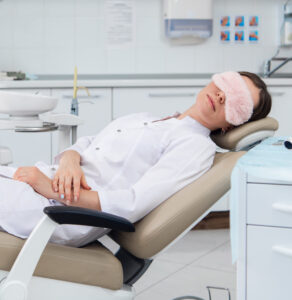
Many with dental fear or dentophobia avoid going to the dentist for years. And, these feelings may be more common than you know. When dental anxiety, dental fear and dentophobia are combined, it affects an estimated 70% of American adults. This unfortunate statistic is a likely reason for the high percentage of adults who suffer with some level of periodontal (gum) disease – over 47%.
As a Periodontist, my staff and I work diligently to pamper patients from the moment they enter. For certain procedures as well as for patients who prefer the addition of sedatives, we offer oral sedation as well as I.V. sedation (twilight sleep).
Oral sedation is a pill that helps patients relax. It also has an amnesiac effect, leaving most with little or no memory of treatment afterward.
I.V. sedation places the patient in a deeper sleep state, also erasing memory of the procedure. It is administered by a doctor of anesthesiology, overseen by Dr. Brad Stone, a Medical Doctor (MD) and a board certified Anesthesiologist & Pediatric Anesthesiologist.
https://www.biltmoreperiodontics.com/comprehensive-care-team/
With both sedation options, patients are closely monitored with advanced safety equipment throughout treatment.
If fear has caused you or someone you know to avoid dental visits, please arrange a consultation with us. In our Western NC periodontal dental office, you’ll find a warm, respectful atmosphere where your concerns are understood. During this time, we can discuss comfort options that may be best for your individual needs along with estimated costs.
Call 828-274-9440.
Recent Posts
Categories
Archives
- September 2024
- August 2024
- July 2024
- June 2024
- May 2024
- April 2024
- March 2024
- February 2024
- January 2024
- December 2023
- November 2023
- October 2023
- September 2023
- August 2023
- July 2023
- June 2023
- May 2023
- April 2023
- March 2023
- February 2023
- January 2023
- December 2022
- November 2022
- October 2022
- September 2022
- August 2022
- July 2022
- June 2022
- May 2022
- April 2022
- March 2022
- February 2022
- January 2022
- December 2021
- November 2021
- October 2021
- September 2021
- August 2021
- July 2021
- June 2021
- May 2021
- April 2021
- March 2021
- February 2021
- January 2021
- December 2020
- November 2020
- October 2020
- September 2020
- August 2020
- July 2020
- June 2020
- May 2020
- April 2020
- March 2020
- February 2020
- January 2020
- December 2019
- November 2019
- October 2019
- September 2019
- August 2019
- July 2019
- June 2019
- May 2019
- April 2019
- March 2019
- February 2019
- January 2019
- December 2018
- November 2018
- October 2018
- September 2018
- August 2018
- July 2018
- June 2018
- May 2018
- April 2018
- March 2018
- February 2018
- January 2018
- December 2017
- November 2017
- October 2017
- September 2017
- August 2017
- July 2017
- June 2017
- May 2017
- April 2017
- March 2017
- February 2017
- January 2017
- December 2016
- November 2016
- October 2016
- September 2016
- August 2016
- July 2016
- June 2016
- May 2016
- April 2016
- March 2016
- February 2016
- January 2016
- December 2015
- November 2015
- October 2015
- September 2015
- August 2015
- July 2015
- June 2015
- May 2015
- April 2015
- March 2015
- February 2015
- January 2015
- December 2014
- November 2014
- October 2014
- September 2014
- August 2014
- July 2014
- June 2014
- May 2014
- April 2014
- March 2014
- February 2014
- January 2014
- December 2013
- November 2013
- October 2013
- September 2013
- August 2013
- July 2013
- June 2013
- May 2013
- April 2013
- March 2013
- February 2013
- January 2013
- December 2012
- November 2012
- October 2012
- September 2012
- August 2012
- July 2012
- June 2012


